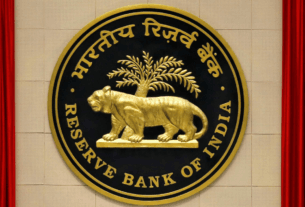Suhani Adilabadkar
Just a few hours to go for the US Federal Reserve to announce the beginning of its interest rate reduction exercise. The US Federal Reserve has held its benchmark interest rates in the range of 5.25-5.5% since July 2023. The world is watching but not with bated breath. The capital markets have already discounted an interest rate cut to be announced on September 18, 2024. The question is whether it would be a 25 basis point (bps) or a 50 basis point cut. The European Central Bank (ECB) has already taken the plunge for the second time, going for a 25 bps cut on September 12 and its benchmark interest rate is now at 3.5%. With inflation now reined in, Central Banks globally are now reducing interest rates to spur their muted gross domestic product (GDP) growth rates.
Inflation In Check, Economies Focus On Growth
ECB and the US Fed are on the same page when it comes to inflation target of 2% for their respective economies. But how is inflation trajectory faring in the US and the European economy? Retail inflation in the Euro Area stands at 2.2%, just a tad above its regulatory target. Inflation in the US stands at 2.5%, a striking distance from the 2% US Federal Reserve target.
Coming to GDP growth, while growth in the Euro Area is weak, the US is on a better footing. Q2CY24 GDP growth came in at 3% (annualized) compared to 1.4% (annualized) in preceding Q1CY24 in the US. The ECB, on the other hand, has revised its GDP growth from 0.9% forecasted in March 2024 to 0.8% in August 2024. While that looks like a very marginal adjustment, the weakness of the economy has come to the forefront.
Though the US Fed is confident of a strong economy with an unemployment rate of 4.2%, a tad above the regulatory 4%, the slow new job growth is a concern.
New hiring or new job growth came in at 1,42000 in August 2024 which was slower according to economists. The US labor department also reduced new hirings by 86,000 altogether in June and July 2024 which was 118,000 and 89,000 respectively. Thus, guessing a 25 or 50 bps cut is like tossing a coin.
Reserve Bank of India Behind The Curve, Should It Follow US Fed
This argument is leveled against all Central Banks time and again. The Reserve Bank of India is also said to be behind the curve with retail inflation coming at 3.65% in August 2024, second lowest in the last five years. Corresponding inflation rates for rural and urban areas are 4.16% and 3.14%, respectively. Food inflation, a major concern for the RBI at 5.66% in August 2024 is the second lowest since June 2023. In India, inflation needs to be maintained by the RBI at 4% with a 2% margin on either side.
And GDP growth has slowed down in June Quarter 2024 to 6.7%, slowest over the past five quarters. With post-pandemic shopping zest now on a downward trajectory, consumers are done with revenge shopping especially in urban India.
Auto sector, which is a major indicator of economic health, witnessed lower growth in August 2024. According to FADA, retail auto YoY growth stood at 2.88% in August 2024. Except two-wheeler and three-wheeler categories which grew 6% and 1.6% YoY respectively, all others were in negative territory in August 2024. Urban auto retail growth was down 2.3% and 5% YoY respectively in July and August 2024.
The auto sector is also witnessing heavy discounts especially in the passenger vehicle (PV) category. PV dealers are offering discounts in the range of Rs 1-1.5 lakh to reduce high inventory levels. According to FADA August press release, there are high inventory levels across the PV segment with stock days ranging between 70-75 days i.e. 7.8 lakh vehicles valued at Rs 77,800 crore.
As per RBI’s bi-monthy consumer confidence survey press release, “Consumer confidence for July 2024 declined for the second consecutive survey round after a prolonged rising trend in the post-Covid period”.
Revenge Shopping Subdues, Should RBI Cut Rates
While rural India seems to be on the rebound and is holding stable on the back of strong monsoons and controlled inflation, urban growth which has been the pillar of strength in the post-pandemic period is slowing down and should be revived. The upcoming festive season will give a better picture of consumer sentiment, spending levels and consumer confidence. The monetary policy committee (MPC) meeting is between October 7-9, next month. While some will say that the RBI is following the US Federal Reserve, but with easing food inflation and retail inflation now in its comfort zone, isn’t it the ideal time for an interest rate cut. Or else it would continue falling behind the curve.




